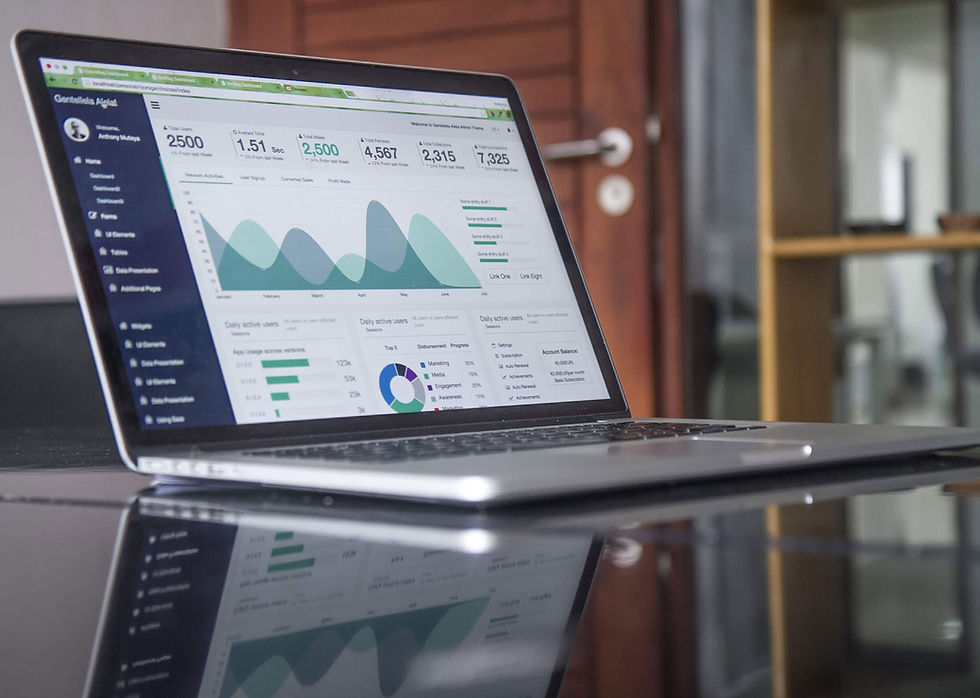A Business Owner's Guide: Take the Guesswork Out of Getting Your Website Designed
- Thabs Nyamane

- Sep 29, 2024
- 5 min read

Last week, I stumbled upon a series of leads from www.bark.com. They offered me a free lead, and it was an excellent one! But I had to pass on joining their lead service because I simply didn’t have the budget at the time. However, what I discovered was that many South Africans want websites—quickly and efficiently. Unfortunately, I noticed that some of the features business owners, NPOs, and schools wanted for under R5000 weren't realistic. But that’s a conversation for another day.
Instead, this got me thinking: many business owners don’t know what to expect when hiring someone to design a website. So, I decided to write this blog to help guide business owners on what they should be getting when a website is designed for them.
We all know that in today’s digital age, having a website is essential to growing your business. But just because you have a website doesn’t mean people will magically find it. Whether you’re setting up an online store, offering services, or showcasing your brand, a professional website will help you reach a wider audience and attract the right customers. Here’s what you need to know.
The Basics: What Every Website Should Include

When hiring someone to design your website—or even if you’re considering going the DIY route using platforms like Wix, GoDaddy, or Pixieset—there are certain essential elements your website should include:
1. Get Your Own Domain Name!
Having your own custom domain name (like www.yourbusiness.com) can really step up the professionalism of your website. Just make sure your designer helps you get and set up a domain if you don’t already have one. Companies like SA Gateway, GoDaddy, and Xneelo are great options. And hey, remember, good customer service is key—how fast they reply to emails can give you a clue about how quickly they'll handle any problems you run into.
2. Website Hosting
For your website to be accessible, it must be hosted online. Platforms such as GoDaddy, Wix, and Pixieset make this process easier, but it is important to research and choose a hosting provider that aligns with your business needs. Compare WordPress, GoDaddy, and Wix to determine the most suitable option, especially if you're not planning to hire a developer. Keep in mind that if you opt for a developer, there may be ongoing maintenance costs.
3. Responsive Design
It is 2024, the majority of people (based on our data, 85% of our website visitors use their mobile phones) are accessing the internet through their smartphones. By incorporating responsive design, you ensure that your website displays and works well on different devices, from desktops to mobile phones.

4. SEO Optimization
A website is only effective if people can find it. Search Engine Optimization (SEO) helps you get found on search engines like Google. Your website should include keyword optimization, meta descriptions, alt text for images, and fast page loading times. You should also have a Google Business Profile and consider adding your company to search engines like Bing or DuckDuckGo. Don’t forget the favicon , the small icon that appears when someone bookmarks your site. (Click here for the answer to What is A Favicon)
5. Security Features
If you collect customer data or payments, security is non-negotiable. Your designer should set up SSL certificates and other protocols to ensure your website is secure.
Your website should be built on a user-friendly platform like WordPress, Wix, or GoDaddy, so you can update your content easily. Make sure your designer walks you through how to manage the CMS.

7. Analytics Setup
To know how your site is performing, you need analytics. Tools like Google Analytics help track visitors and where they’re coming from.
8. Contact Forms and Integrations
Make sure your website includes functional forms (e.g., contact forms or booking systems) and integrates with tools like email marketing platforms or social media accounts.
9. Support and Maintenance
Once your site is live, you’ll still need support. Ask your designer if they offer ongoing maintenance. This might include updates, troubleshooting, or backups. A monthly maintenance plan can save you costly repairs down the line. For example, if your website goes down or a plugin fails, having support on hand can prevent lost business.

The Perks of Using GoDaddy, Wix, or Pixieset for Maintenance
If you're going the DIY route, platforms like GoDaddy, Wix, and Pixieset offer an easy way to build and maintain your website.
Why GoDaddy?
GoDaddy is known for its simple, no-frills website builder, making it perfect for those who want something quick and easy. Plus, it offers reliable hosting, great customer support, and seamless integration with domain and email services.
Why Wix?
Wix is a robust option with a lot of flexibility and customization. With drag-and-drop functionality and a range of templates, it’s easy to build a professional-looking website. Wix also offers built-in SEO tools and a variety of apps to enhance your site.
Why Pixieset?
Pixieset is ideal for photographers and creative professionals. It allows you to create stunning galleries and offers built-in tools for managing client galleries, contracts, and invoices. With Pixieset, you can focus on your work while providing clients with an easy, professional platform for purchasing or downloading prints.

DIY vs. Hiring a Designer: What’s the Right Choice for You?
Here’s the question every business with a limited budget face: Should I DIY my website or hire a professional designer?
DIY Pros
Platforms like Wix and GoDaddy are cost-effective, and you can create your site at your own pace.
They provide intuitive dashboards where all tools are in one place, making it simple to scale if you dedicate time to it.
DIY Cons
Limited customization options and templates may not fully match your business's vision.
Managing updates, security, and troubleshooting can become overwhelming without technical support.
Hiring a Designer Pros
A designer can create a fully customized site that reflects your brand and offers advanced features.
They handle everything from design and development to SEO and integrations, ensuring your site looks polished and professional.
Hiring a Designer Cons
It’s more expensive, but the investment often pays off in the long run, especially if you need ongoing maintenance or complex features.

Final Thoughts
Whether you choose to DIY or hire a professional, a well-designed website is key to growing your business.
At Spheres Consulting Emporium, we offer various options to fit your needs:
1. Wix, GoDaddy, or Pixieset Designs – Starting at R10,000.
2. Custom Website Development** Starting at R15,000, including ongoing maintenance.
3. Project Management Services – We’ll source a website designer and oversee the process for you.
Contact us to discuss the option that best suits you and we can take it from there. Contact us at www.spheresconsultingemporium.co.za










Comments